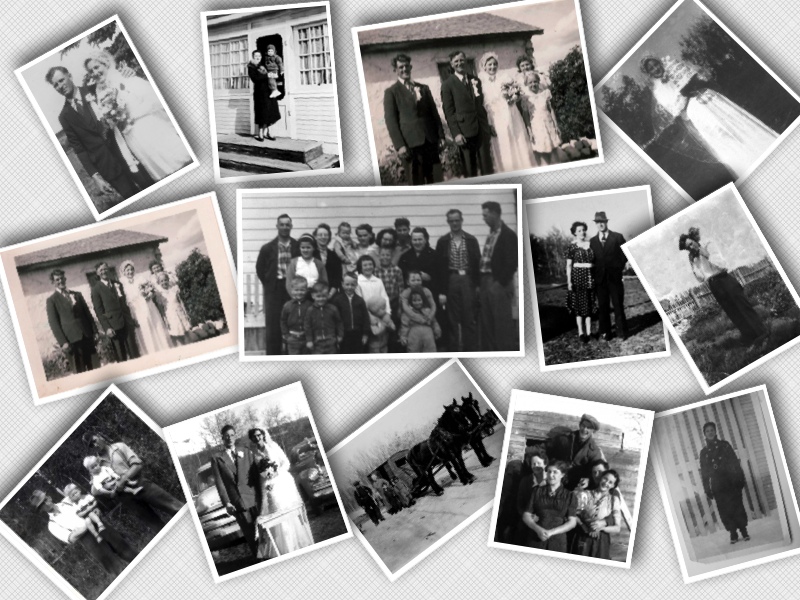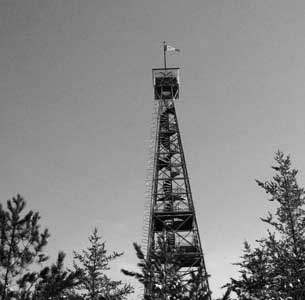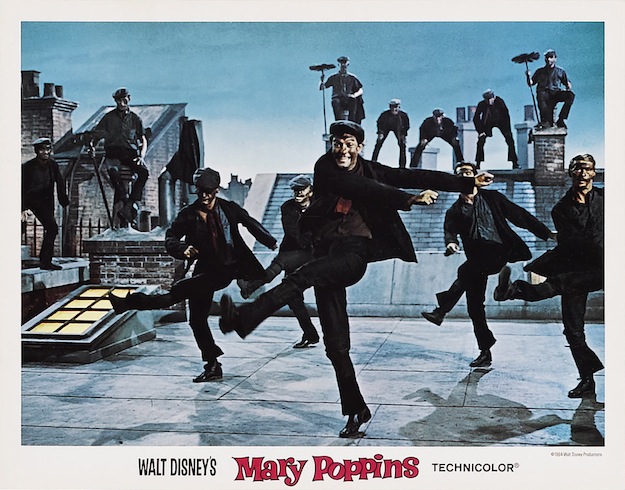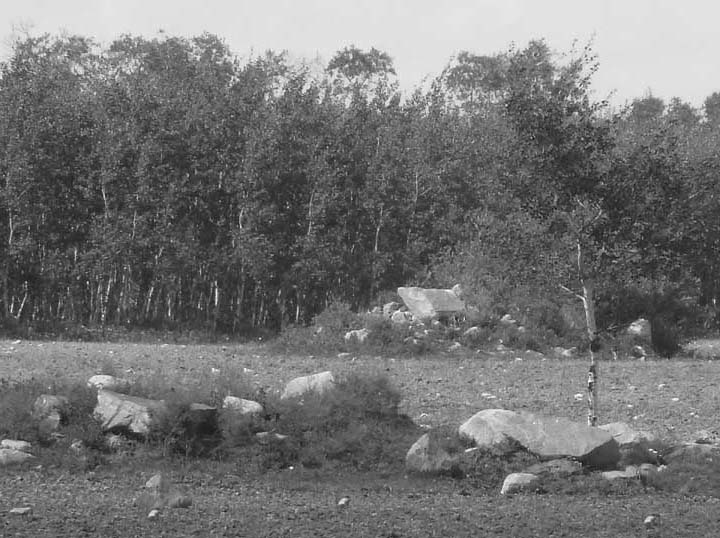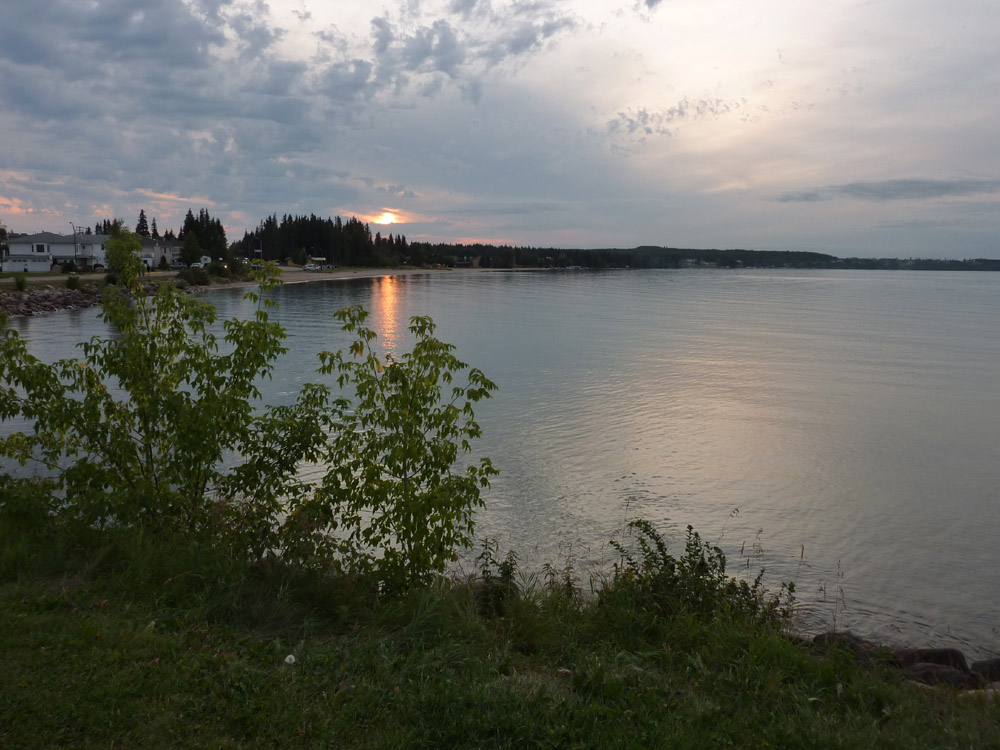Author Archive
Birch Lake: A New Begining – Chapter 2 of 4
Photo (Collage of Mom’s Photos): Family and friends in Saskatchewan provided a strong draw, but earning a living on the farm was becoming increasingly difficult.
Link to Next Post: A Place in the Sun
Link to Last Post: Blizzard of Forty-One
Link to Family Stories Index
Community Dance: March 1941
It would be the first time since Harold was born that the new mom and her husband had attended a dance at the Meadstead Community Hall. In those days almost everyone in the family attended the dance including kids and babies. Because their were no carriages or baby baskets, makeshift items were used to carry the baby, diapers, bottles, etc. Laura used an old suitcase for this purpose. She would just pop open the top and she had a ready made bed for her little boy.
The full story, including this Chapter, is now in book form;
This Book is available from
Kindle Direct Publishing
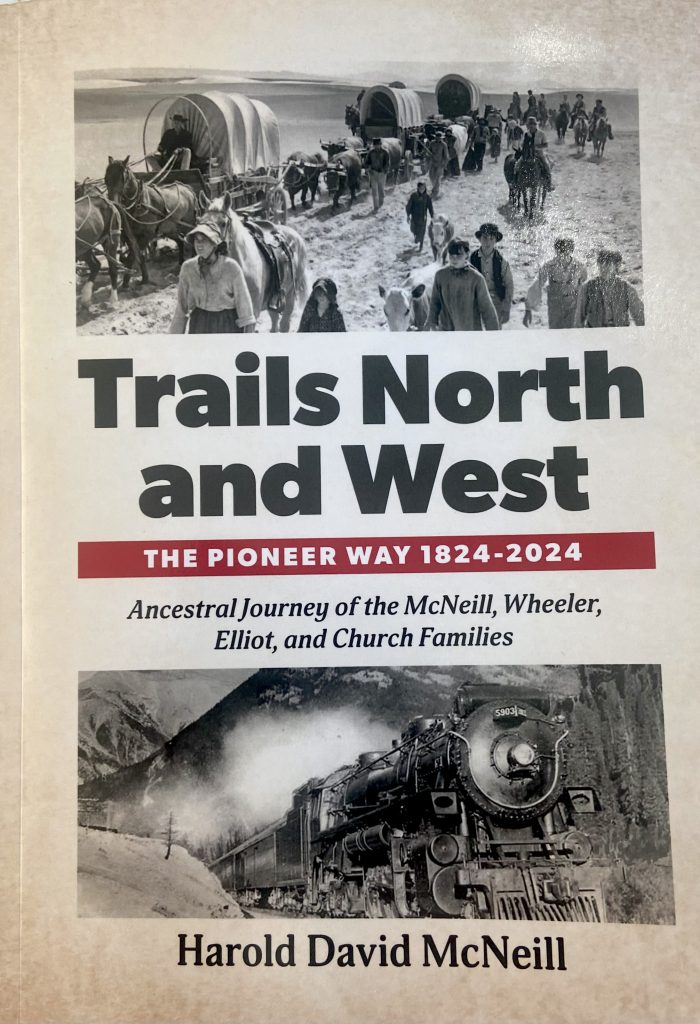
Book 2 -Trails North an and West: The Pioneer Way 1824-2024 is now available from Kindle Direct Publishing (KDP) You can search by book title or author name. A preview of the first seventeen pages is provided (link on bottom left on the KDP order page). The preview also includes the Table of Contents.
Note: When ordering four or fewer books, they will be printed and shipped within Canada. An order of 5 or more books may be printed and shipped from the United States. Postage is included in the purchase price when ordering from either country.
If you are thinking of sending books as gifts to others, you may consider having those books mailed directly to the recipient(s), by Amazon, at time of ordering. In this way, you would avoid Canada Post fees which currently run about $20.00 (plus tax) for one or two books, if enclosed in a single mailer.
For more background information on the story, go to the lead story on this blog.
Cheers,
Harold
Link to Next Post: A Place in the Sun
Link to Last Post: Blizzard of Forty-One
Link to Family Stories Index
(2064)
A “Non-Survivable” Crash
A “Non-Survivable” Crash
In a moment of absolute clarity Dwayne realized what was going to happen – his airplane was going to crash into the mountainside and there was not one thing he could do to stop the impending disaster.
In a final act of defiance the plane would stall, drop one wing, enter a spin and spiral down into the ground at well over two hundred k/hr. To survive such a crash would be impossible. After a lifetime of safe flying how did Dwayne suddenly find himself facing this catastrophic situation? In these last few moments he shuddered to think how chance controls every move in our lives.
He was an experienced bush pilot with thousands of hours of flying time and an impeccable record of safety. However, in the annals of bush flying, even the most experienced pilot can make little mistakes and sometimes even those little mistakes can lead to disaster. Today, all alone with his airplane in a remote area of the British Columbia, Dwayne made a few of those mistakes and in the next few seconds it would cost him dearly.
A friend of the family, Dwayne, lives in Cold Lake, Alberta, a community 200 miles northeast of Edmonton. Cold Lake is known internationally for its giant airbase (CFB Cold Lake) as well as for the trillions of barrels of wet sticky tar sands that exist far below the ground. Dwayne, from his home base in Cold Lake, has spent much of his life flying bush planes over the Western Canadian and Alaskan hinterland. He has experienced flying conditions that range from 30F below in blinding snowstorms to well over 100F above dodging thunderstorms. Dwayne knows all to well the dangers of bush flying as he and other family members of his family have been in the business since the 1940s.
(1246)
Birch Lake -The Fire Tower: Chapter 4 of 4
Photo (Web) Fire towers in the early years were flimsy wooden affairs. Over the summer of 1944, dad took a job with the Saskatchewan Forest Service as an observer at one of the hundreds of fire towers that had been erected throughout Northern Saskatchewan, this one above is similar to the one dad worked near Meadow Lake. After that one summer, we often returned to Meadow Lake for the yearly Stampede.
Spring, 1944
Mom repeatedly called: “Hoo hoo, Harold, where are you? Hoo hoo, Haarooold.” There was no answer and she was more than worried. At three and a half, I was always running around outside playing, but when mom hadn’t heard me for a while she went out to see what I was doing. She knew that dad was in the bush cutting wood and sometimes he would take me along, but would always tell mom first. She probably thought I was into some kind of mischief that would not be far off the mark for a three-year-old.
Mothers! So trusting of their little boys!
The full story, including this Chapter, is now in book form;
This Book is available from
Kindle Direct Publishing

Book 2 -Trails North an and West: The Pioneer Way 1824-2024 is now available from Kindle Direct Publishing (KDP) You can search by book title or author name. A preview of the first seventeen pages is provided (link on bottom left on the KDP order page). The preview also includes the Table of Contents.
Note: When ordering four or fewer books, they will be printed and shipped within Canada. An order of 5 or more books may be printed and shipped from the United States. Postage is included in the purchase price when ordering from either country.
If you are thinking of sending books as gifts to others, you may consider having those books mailed directly to the recipient(s), by Amazon, at time of ordering. In this way, you would avoid Canada Post fees which currently run about $20.00 (plus tax) for one or two books, if enclosed in a single mailer.
For more background information on the story, go to the lead story on this blog.
Cheers,
Harold
Link to Next Post: Martineau River Logging Camp (Beginning of Part II)
Link to Last Post: A Place in the Sun
Link to Family Stories Index
(1797)
Treat Your Tradespersons Fairly
By far the majority of tradespersons are hard working, honest people who will do a days work for an agreed upon price. Some employers however, some who can well afford the rate, will turn around and try to stiff the tradesperson.
The 911 operator received a mid-afternoon call from hysterical woman screaming that she had just been assaulted. The barely coherent woman gave her address and two cars were dispatched Code 3. A record search revealed no previous calls to the residence, a large, upscale home in south Oak Bay.
Another patrol officer and I happened to be nearby – we responded immediately. Although there were no previous to calls to the residence, we approached as “high risk” not knowing what might have transpired. After parking several houses back, we did a quick scan of the street then covered each other as we approached the house. There was no one in the yard, no car in the driveway and the curtains were open. I approached the front door while my partner covered from the side away from the window.
About half way up the sidewalk, the door suddenly swung open and a woman in her mid sixties came rushing out. She was completely covered from head to toe in a black substance. Her appearance reminded me of a farmer having worked all day in a hot, dry, dusty field. The whites of her blinking eyes and the flash of her teeth stood in stark contrast to the black that covered her face. Although extremely upset, we were able to ascertain the suspect had fled the scene driving a white, windowless mini van with a ladder attached to the top.
(280)
Birch Lake – A Place in the Sun: Chapter 3 of 4
Photo (Harold, 2010) Dad worked this field every year trying to make ends meet. He picked those rocks that came back every year as the frost heaved them out of the ground.
As the horses dragged the stone boat around the field, Dave trudged alongside picking rocks and tossing them on the platform. The fence lines and small islands in the field were piled high with rocks of every shape, size and colour, discarded there over three decades by Dave, his brothers and their dad. Each spring a new crop would appear so the men laughingly called themselves “prairie rock farmers” 1.
As searing heat rose in waves from the summer fallow, Dave looked out at another ten thousand rocks strewn across the seemingly endless field. God only knows, it all seemed to so bloody hopeless.
As he trudged silently along he mulled over a life that seemed defined by these rocks:
“What in hell am I doing here? I have been picking these same god forsaken rocks since I was ten and next year, will be picking them again, then again and again. Will it ever end? There must be more to life!
He shuddered, “I need a change or I will go crazy!” As he said this he grabbed a rock and flung it hard against the pile forming in the centre of the field. The horses jumped as it ricocheted loudly, rejoining the myriad still waiting on the field.
Mother Nature – there was no way she was going to be thwarted! Dave continued to think long and hard about why he continued to stay in Birch Lake. The thought of ‘chucking it all’ and moving on excited him.
End of Introduction
The full story, including this Chapter, is now in book form;
This Book is available from
Kindle Direct Publishing

Book 2 -Trails North an and West: The Pioneer Way 1824-2024 is now available from Kindle Direct Publishing (KDP) You can search by book title or author name. A preview of the first seventeen pages is provided (link on bottom left on the KDP order page). The preview also includes the Table of Contents.
Note: When ordering four or fewer books, they will be printed and shipped within Canada. An order of 5 or more books may be printed and shipped from the United States. Postage is included in the purchase price when ordering from either country.
If you are thinking of sending books as gifts to others, you may consider having those books mailed directly to the recipient(s), by Amazon, at time of ordering. In this way, you would avoid Canada Post fees which currently run about $20.00 (plus tax) for one or two books, if enclosed in a single mailer.
For more background information on the story, go to the lead story on this blog.
Cheers,
Harold
Link to Next Post: Fire Tower
Link to Last Post: A New Beginning
Link to Family Stories Index
(1488)
O’Canada … In All Thy Son’s Command
Controversial? Yes. Necessary? Indeed.
O’Canada, In all of us command.
(Feb 2018 1408)
March 2010: An item in the Conservative throne speech about changing two words in ‘O’Canada’, created a significant negative response even though the suggested change is long overdue. It seems doubtful, at this time, that the government will follow through. It’s equally likely that within the next decade the change will be made.
While we in the ‘older’ generation are often accused of being out of touch with the times, it seems that getting stuck in a rut is not just the preserve of the older generation. If the current debate about changing the word ‘son’ to something gender neutral is used as the benchmark, the younger generation can be as equally stubborn.
 Creating gender equality has been a long, slow process for many countries including Canada. Replacing the word ‘son’ in our Anthem is a small but symbolically important part of the process.
Creating gender equality has been a long, slow process for many countries including Canada. Replacing the word ‘son’ in our Anthem is a small but symbolically important part of the process.
Think back to some of the earlier challenges in our evolving democracy:
• It was well into the 1920s1 before women began to gain enfranchisement across Canada. Enfranchisement is considered a basic right in a democratic society yet women had to wait 50 years following confederation before that right began to creep across Canada, with all Provinces entering by 1949.
• As recently as 50 years ago, women in a few Canadian provinces were prohibited from entering beer parlours. Even in the more ‘progressive’ provinces, women often had to enter via a designated entrance with an escort. They were then seated in a segregated section.2
(1859)
A Predictable Accident?
Above: Queen of the North en route through the Inside Passage on the West Coast of Canada. Having traveled on dozens of Cruise ships of various size, as well as hundreds of trips on BC Ferries including an occasional trip on the Queen of the North through the inside passage, I am amazed there are not more accidents given the oceans of the world can produce extremely challenging situations. The loss of that classic ship, the Queen of the North is just one more example of how things can go catastrophically within the blink of an eye.
Note: It appears that on occasion when making a simple one-word change, a whole paragraph can be replicated. I have not yet determined why this takes place, so please bear with me when this happens. Harold
Of the special items on the Queen of the North were several large murals that decorated the walls along the passageways. Photos, depicting various historical sites along the route, were accompanied by a written history of each site and surrounding area. The murals and stories were prepared under the direction of a long-time friend and former BC Provincial Archeologist, Bjorn Simonson. My wife, Lynn McNeill assisted in the preparation. As this work was completed perhaps a decade before the sinking, I don’t know if they were still being displayed when the Queen of the North sank on that fateful day in 2006.
(Activity: May 1, 2017 – 2712)
Follow-up News Reports, June 2013
Karl Lilgert, the navigating officer on the ill-fated Queen of the North, leaves the court after being found guilty of Criminal Negligence Causing Death. His being sentenced to four years in a Federal Penitentiary very much surprised me (see comments near the end of this post relating to the essential elements of a Criminal Negligence charge). I have no doubt the constant stream of inflammatory media reports as well as the vicious presentation by the Crown, had a strong influence on the jury.
to four years in a Federal Penitentiary very much surprised me (see comments near the end of this post relating to the essential elements of a Criminal Negligence charge). I have no doubt the constant stream of inflammatory media reports as well as the vicious presentation by the Crown, had a strong influence on the jury.
During my thirty-year police career, experience taught me that convicting someone on a charge of Criminal Negligence Causing Death was a particularly onerous task. As discussed further on in this article, each element of that particular statute presents a very real challenge for the investigators and crown.
In particular, I have been involved in other cases where the “wanton and reckless” disregard for life was considerably more egregious than in the Lilgert case, yet his case ended with a conviction. In my opinion, it was a stretch to have found each of the elements of the charge were proven in his case. I would be very surprised if either the charge or the sentence, perhaps both, were not tossed out on appeal.
Harold
(3074)
Big Kinosoo: Dangerous Waters Run Deep, Chapter 6/6
Photo (Family Files): As the sun was setting, we all took a walk along Kinosoo Beach. Those waters may look peaceful on the surface, but in depths lurks a monster that with one look could make that infamous white shark Jaws retreat. I was desperately worried about the safety of Sampi and his family, but he was a man on a mission and was not about to be deterred. All I could do was pray they safely returned.
This is the last post in the Kinosoo Series. Perhaps more will be added later
See the van Rensburg update in the footer
Link to Last Post: Sampi gets hooked
Link Back to Adventures Index
Chapter 6: Dangerous Waters Run Deep
The September long week-end traditionally marks the end of summer in Canada. While September can be one of the most glorious month, the final week-end before school starts brings out thousands of city dwellers and country folk alike as they hit the road for that final week-end at the beach or on the water.
In Cold Lake the campground was booked to capacity and the Marina overflowing with fishing and sailing boats of every make, model and size. Line ups at the boat launch could stretch for blocks. The bars and night spots opened early and stayed open late. Fishing, sailing, hunting, hiking, biking, water skiing or simply lazing on the beach – the great outdoors around Cold Lake had something for everyone.
(1825)

